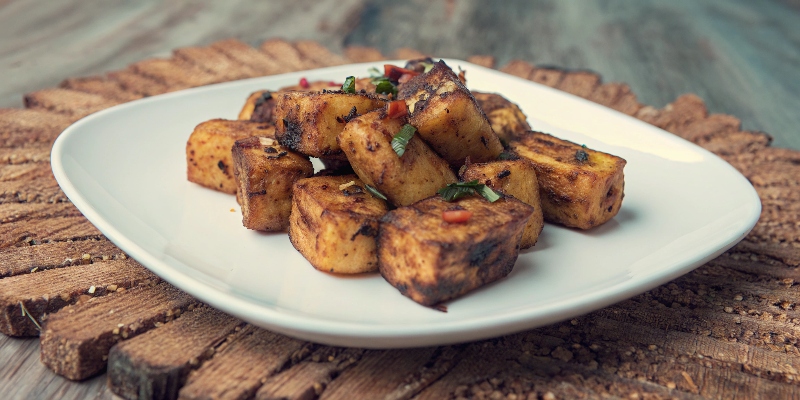Ghanaian Kelewele

Ghanaian Kelewele
The Cultural and Historical Background
Ghanaian Kelewele is part of the everyday street-food fabric of Ghana (SUB-SAHARAN AFRICA). Vendors developed the dish for speed, affordability, and bold flavour, folding local produce, spice traditions, and colonial trade influences into a format that travels well in the hand. On market lanes, and night bazaars, it signals the hour with the sound of ladles on steel, and charcoal flares from grills.
How it’s Prepared and Served by Traditional Street Vendors
Prep happens early: core sauces, spice pastes or doughs are made in bulk; proteins, and vegetables are trimmed, and portioned. During service, cooks work in stations—one handling the hot pan or griddle, another portioning starches, and a third finishing with are prepared fresh daily.
Flavour and Texture Profile
Expect a lively balance—salt, heat, sweetness, and acidity—plus an essential texture play between crisp elements, and softer grains, noodles or bread. Fresh herbs, and citrusy or tangy condiments keep richness in check.
Ingredient Spotlights, Sourcing Tips, and Substitutions
- Core starch: Choose quality rice/noodles/bread; day-old rice fries best; strong gluten breads manage saucy fillings.
- Proteins & produce: Use seasonal vegetables, and well-trimmed meats or tofu/tempeh; seafood should smell ocean-clean.
- Spices & pastes: Whole spices bloomed in hot oil unlock fragrance; ready-made pastes can stand in with a splash of fresh aromatics.
- Subs: Offer vegetarian swaps, and gluten-free options where sensible without losing the spirit of the dish.
Cooking Technique Details from Authentic Vendors
- Heat control: Wok hei or griddle char without burning aromatics; manage oil temperature for crisp not greasy results.
- Layering: Aromatics first, then proteins, then sauces; greens, and herbs at the end to stay bright.
- Rest & hold: Batters rest to hydrate; fried items are held on racks, not stacked, to keep them crisp.
Common Variations Across Different Regions
Regional tweaks might swap fats (coconut oil, mustard oil, olive oil), souring agents (tamarind, vinegar, citrus), or heat sources (chilli types). Garnishes range from pickled vegetables to yoghurt-based sauces or herb salads.
Pairings with Drinks, Sides, and Sauces
Iced tea, lime sodas, and local lagers are common partners. Serve with contrasting condiments—chilli dips, herb chutneys, garlic yoghurt, nuoc cham, alioli or tahini—plus raw salads for crunch.
Anecdotes about Street Markets where it’s Popular
At peak hours, you’ll hear metal spatulas tapping a steady rhythm while queues snake between stalls selling fruit, sweets and skewers. The best vendors move with are prepared fresh daily.
Modern Twists and Home Adaptations
- Air-fryer, and oven methods for lighter crisp.
- Meal-prep by batching sauces, and par-cooking components.
- Dietary adjustments like plant-forward proteins or gluten-free batters that keep flavour first.
Step-by-Step (At a Glance)
- Make/assemble the base sauces, spice mixes or doughs.
- Cook proteins/veg fast over high heat or fry/griddle as needed.
- Finish withherbs, and condiments; serve immediately.
AUTHOR

BatchStreet.com
Your trusted source for global street food recipes
BATCH
INGREDIENTS
STEPS
PREP PLANTAINS
Peel and cut plantains into bite‑sized cubes.
SEASON
Toss plantains with ginger, cayenne, cloves and salt.
FRY
Fry in hot oil until golden and crispy.
DRAIN
Drain on paper towels.
FREEZE
Freeze cooked kelewele; reheat in oven.
PRINTABLE RECIPE LABEL
GHANAIAN KELEWELE
QTY: 1
DATE: 11/09/2025
BAKE 180°C / 6 MIN
Screenshot for freezer